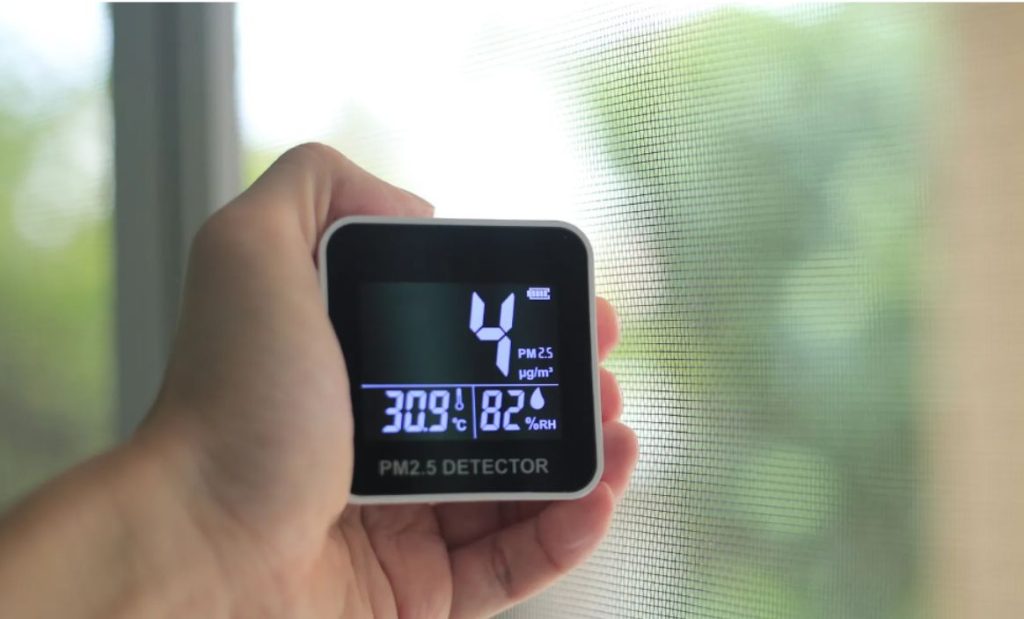Indoor Air Quality Monitoring in Qatar: Ensuring a Healthy Indoor Environment
Indoor air quality (IAQ) plays a vital role in maintaining a healthy and safe indoor environment, whether in offices, commercial buildings, industrial facilities, or residential spaces. Poor IAQ can lead to health issues, decreased productivity, and non-compliance with safety regulations. Indoor air quality monitoring in Qatar is essential for detecting pollutants, ensuring air purity, and creating a comfortable indoor atmosphere.
What is Indoor Air Quality Monitoring?
Indoor air quality monitoring is the process of measuring and analyzing air pollutants to ensure a safe environment for occupants. It helps identify contaminants such as dust, volatile organic compounds (VOCs), carbon dioxide (CO₂), carbon monoxide (CO), mold, and other airborne particles that can impact health and well-being.
Why is Indoor Air Quality Monitoring Important in Qatar?
With Qatar’s hot climate and reliance on air-conditioned spaces, indoor air pollution can be a major concern. Poor ventilation, industrial emissions, and high humidity levels can lead to poor IAQ, resulting in:
Health Issues: Exposure to indoor pollutants can cause headaches, allergies, respiratory problems, and long-term illnesses.
Reduced Productivity: Poor air quality can lead to fatigue, concentration issues, and absenteeism in workplaces.
Regulatory Compliance: Businesses must comply with IAQ regulations to ensure employee health and safety.
Improved Comfort: Monitoring IAQ enhances indoor comfort and air circulation.
Key Pollutants Monitored in IAQ Testing
Particulate Matter (PM10 & PM2.5): Fine dust particles that can enter the respiratory system.
Volatile Organic Compounds (VOCs): Emitted from paints, furniture, and cleaning products.
Carbon Dioxide (CO₂): High levels indicate poor ventilation.
Carbon Monoxide (CO): A toxic gas produced by combustion sources.
Mold and Bacteria: Common in humid environments, leading to respiratory issues.
How Indoor Air Quality Monitoring Works
Indoor air quality assessments involve using advanced sensors and equipment to measure pollution levels. Monitoring can be:
Continuous Monitoring: Real-time tracking of air pollutants.
Periodic Testing: Scheduled IAQ assessments to identify trends and risks.
Source Identification: Determining pollution sources for effective mitigation.
Indoor Air Quality Regulations in Qatar
IAQ monitoring must align with international and local standards, including:
ASHRAE (American Society of Heating, Refrigerating and Air-Conditioning Engineers) – Provides ventilation and IAQ guidelines.
OSHA (Occupational Safety and Health Administration) – Defines exposure limits for indoor pollutants.
Qatar’s Ministry of Public Health (MoPH) – Regulates IAQ standards for public and commercial spaces.
Choosing the Right IAQ Monitoring Service in Qatar
To ensure accurate air quality assessments, businesses should work with experienced professionals. At JAB International Consultancy, we offer expert indoor air quality monitoring in Qatar, helping businesses and homeowners maintain a safe indoor environment.
For additional information on global IAQ standards, visit ASHRAE’s official website.
Conclusion
Maintaining good indoor air quality is crucial for health, productivity, and regulatory compliance. By investing in indoor air quality monitoring in Qatar, businesses and residents can ensure a cleaner, healthier indoor environment.

